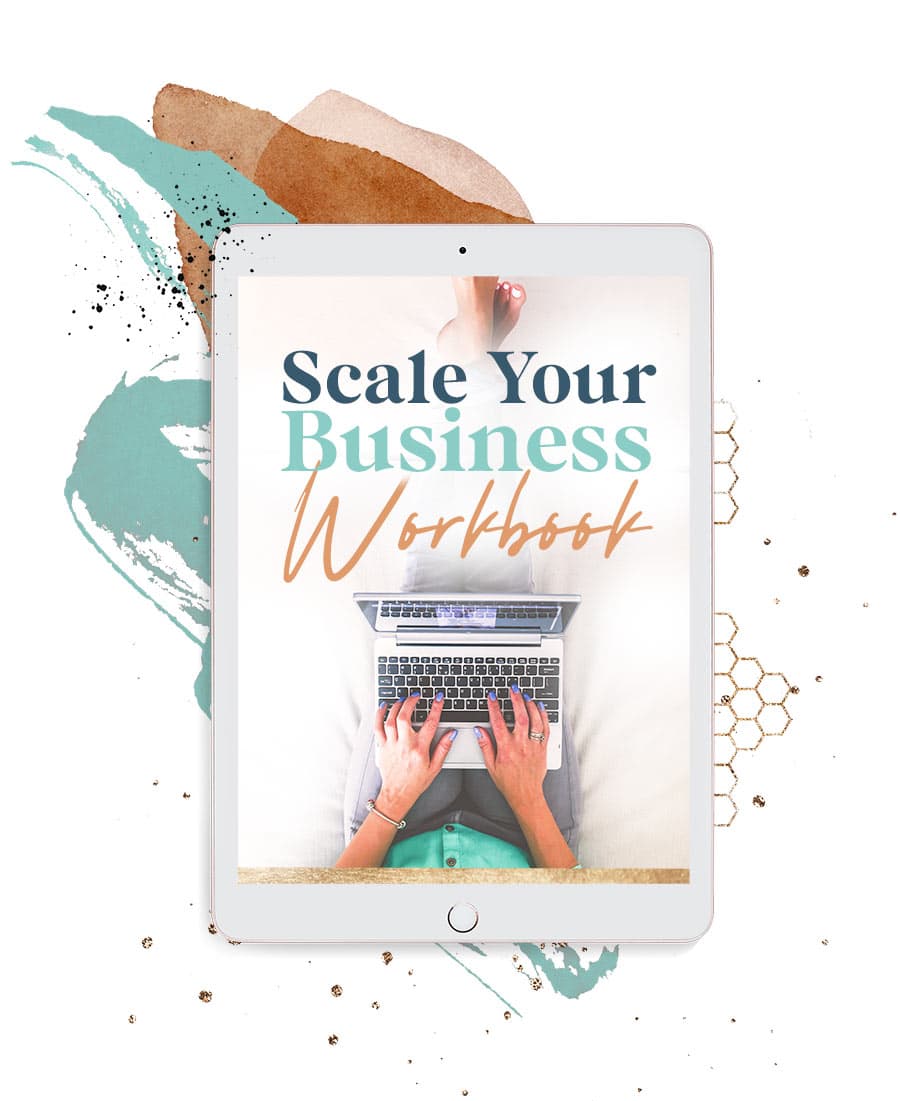As you probably guessed, I’m all about time freedom around here. I know that most entrepreneurs got into business for themselves so they could do their own thing, on their own time. That said, I also know that lots of entrepreneurs don’t know exactly how to do that – especially if they’re new-er to the online space or are looking to phase out one-on-one work and create more digital products.
And that’s where sales funnels strut in. (So, if you keep hearing about how sales funnels can free up your time and boost your revenue, but don’t know exactly what types of funnels you should set up in your biz, you’re in the right place, gorgeous.)
Here’s the thing: Effective sales funnels don’t just fill your pockets (although they do, either directly or indirectly), they can also provide delicious time freedom – aka you can sell while you’re away from laptop, whether that’s across the street or across the pond. When you set up the right funnels, you truly can sell more while ‘doing’ less.
Curious about what types of sales funnels you should set up to meet your revenue and relaxation goals? Let’s explore eight of the most effective (and easy-to-set-up) sales funnels for beginners:
1) Lead Generation Funnel
Let’s start at the very beginning, shall we? If you’re in business, you probably have a lead generation funnel in place. A lead generation funnel usually includes offering a valuable freebie that entices interested leads to sign up for your email list, where you can continue to nurture them to turn them into customers. A lead generation funnel will include the lead magnet itself, a landing page and a confirmation email or two.
It’s not super complicated, which means you can create several lead generation funnels. In fact, it can be very smart business to create a different lead gen funnel for each of your offers (especially higher-end offers) and/or each of the topics you’re an expert in. The goal here is to offer your potential lead something irresistible that applies to where they’re currently at and the problems they currently want to solve. How you deliver it is totally up to you–everything from ebooks to webinars to templates work well. They’ll receive your gift in exchange for their precious email address, and you get to build a list of potential customers you can wine and dine over time.
2) Welcome Nurture Funnel
Once you’ve landed leads, it’s time to nurture them so they start to know, like and trust you. The Welcome funnel will generally kick in right after the lead gen funnel. Welcome funnels usually include 5-10 targeted emails filled with value and trust-building emails that help people start to see you as the expert who can help them solve their problems. At the end of your welcome nurture funnel, you can move your prospects into a full sales funnel, or make an offer right inside your welcome funnel.
The benefit for you is that this automated funnel can help you convert leads into paying customers without constant manual effort. Anyone who signs up for your freebie should get this sequence automatically – and over the first few days after they’ve signed up, when they’re super excited to learn more about you and your area of expertise.
3) Sales Funnel
Next up, we have the elusive and oh-so-enticing sales funnel. Sales funnels are where the real magic (er, sales) happen. Sales funnels is a broad term, though, and can really apply to any automated sequence you set up where you make an offer. The goal? To guide your prospects through the buying process with enticing copy and clear calls to action (and maybe a cute GIF or two).
And while email sequences are generally the most popular type of sales funnel, you can also adapt a sales funnel for any platform (like, for example, setting up a messenger chatbot on your Facebook business page). There are no ‘set in stone’ rules for sales funnels, but most automated, evergreen funnels (the kind we like around here!) are 4-8 emails and will cover everything the prospect might need to know to feel confident purchasing–and purchasing from you.
You can use your sales funnel and various segmentation techniques to increase your revenue by setting up upsell and cross-sell funnels, too. And again – not everything in the sales funnel doesn’t have to happen via email (although that’s the easier to automate). You can also set up automated evergreen webinar or VSL funnels and more.
4) Customer/Client Onboarding Funnel
We generally think about funnels as a gateway to profits, but you can also use them to make your life easier (thus creating more freedom!) post-sale. After your customers hit ‘purchase,’ you can automatically add them to an onboarding funnel, where you can deliver offer-specific resources, tutorials, and FAQs to ensure they know how to use (and rock) whatever they purchased. An onboarding funnel can also help you provide an exceptional customer experience and reduce back & forth emails from new buyers with questions & concerns.
5) Retention Funnel
We’ve got the customers; now, let’s keep them around, shall we? Another post-sale funnel you can create is a targeted retention funnel that’s only sent (and only available to) past clients & customers. A well-crafted retention sequence will make it super easy-peasy to shower your loyal customers with personalized offers, loyalty rewards, and the occasional love note and/or follow-up survey to make sure customers stay engaged (and satisfied) with your products and services. Think of like a VIP club especially for your business.
And bonus? You can continue to add new customers – and new emails – to it over time. Since past customers are the people most likely to buy from you again, a retention funnel is a valuable investment of time & energy on your end.
6) Referral Funnel
A referral funnel is another example of a funnel you can place past clients/customers into post-sale. You could bake this into your offboarding process, too – either way works! A referral funnel is a specifically-designed sequence that gently nudges happy customers to refer their friends and colleagues–with a (virtual) wink and a little incentive, of course. It’s an easy way to harness the power of word-of-mouth marketing, as well as ensure you stay top-of-mind with past customers. Do this right & it can only not only boost sales & help you land new, ideal customers, but also help you save time in the marketing department.
7) Abandoned Cart Recovery Funnel
Don’t let those almost-sales slip through your fingers. With an abandoned cart recovery funnel, you can send automated reminders to anyone who placed a digital product in their shopping cart on your website and coax them back to your website to complete their purchase. These funnels are usually short & sweet, and sometimes include a nice incentive (like a cool discount) for any indecisive customers-to-be.
8) Affiliate Marketing Funnel
If you’re an affiliate for another entrepreneur’s evergreen product or offer, why not create an affiliate marketing funnel to spread the word & collect a commission while you’re at it? Plot it out just like you would a lead gen funnel for your own products – some affiliates will even provide you with a lead magnet to offer your audience, that they’ve already created – and then use their swipe copy or your own emails to sell their products or services. In most cases, they’ll do the heavy lifting, but you still get to enjoy a revenue boost (as well as the benefits of scoring email addresses of potential new customers for your own business!)
Funnels are a super big, broad topic – but I hope this quick & dirty little overview gave you some fun, easy ideas for new ways you can sell to your audience on autopilot, see those sales figures climb & continue to experience the time freedom you’re yearning for.







